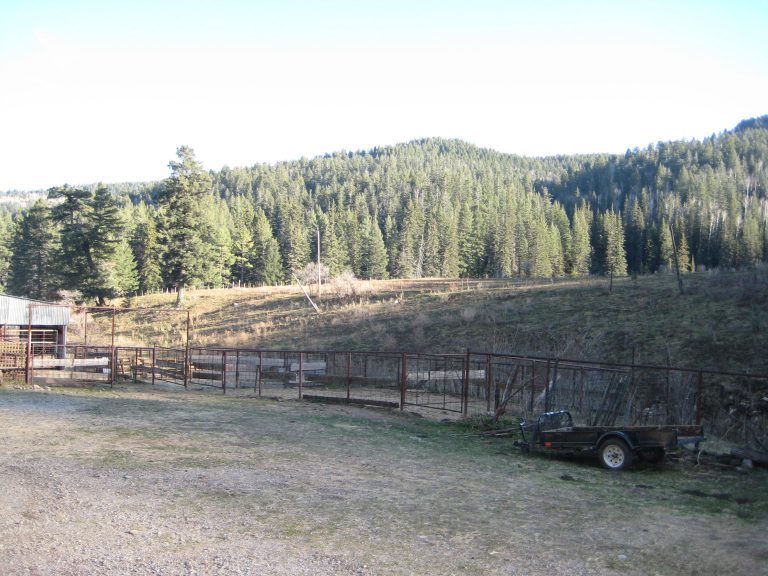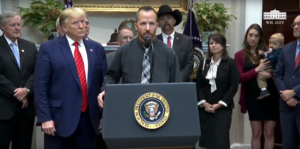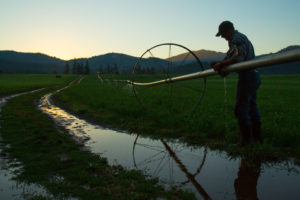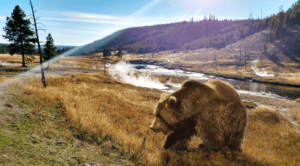The Hill: Interior has revised endangered species rules — what happens now?

The Endangered Species Act is one of the nation’s most popular environmental laws. Any potential change to it generates public concern — and understandably so. The federal government recently announced new rules to implement the law. But many are wondering: How will these changes affect species conservation?
We should evaluate the rules by asking whether they weaken the law’s ability to prevent extinctions or improve its ability to promote the recovery of rare species. After all, the Endangered Species Act has achieved impressive success at preventing extinction, with 99 percent of protected species surviving today. We must maintain that success.
On the other hand, less than 3 percent of protected species have recovered and been delisted. In fact, as of 2010 — the last time the U.S. Fish and Wildlife Service reported trends to Congress — less than 10 percent of protected species were even improving. We can do better.
Fortunately, one of the most significant new rules will preserve what the Endangered Species Act does well — preventing extinctions — while improving its ability to recover threatened and endangered species. The rules will change how federal officials determine what regulations to apply to species that are listed as threatened, and which are species that face remote risks today but could become endangered in the foreseeable future.
For several decades, the Fish and Wildlife Service has applied the same strict protections to threatened species as it does to endangered species. This is intuitively appealing. Aren’t more protections always better? Unfortunately, that approach has not fared well in practice.
Consider, for example, the effect on private landowners — on whose actions most endangered species’ habitat depends. If landowners restore habitat for an endangered species, enabling its status to be upgraded to threatened, their reward is … nothing; the same restrictions continue to apply to their property. For this reason, landowners often are discouraged from providing habitat for listed species in the first place.
The new rule will help realign the incentives of landowners with the interests of rare species by allowing the Fish and Wildlife Service to tailor protection to the needs of each species. Going forward, the agency will be able to craft specific rules for threatened species that can reward landowners as a species recovers while retaining the ability to impose stricter “endangered” protections, should a species need them.
Importantly, this change will not undermine the Endangered Species Act’s success at preventing extinction. Regulations for endangered species — those presently at risk of extinction — will remain as strict as ever.
However, better incentives for private landowners can dramatically increase the recovery rate for endangered species. Last year, the Property and Environment Research Center published a report concluding that this change will provide federal officials, states, landowners and conservationists more opportunities to create innovative solutions to actively recover imperiled species.
Several recent cases provide a blueprint for how the new rule could work. Last year, for example, the Fish and Wildlife Service listed the Louisiana pine snake as threatened because of the loss of longleaf pine forest. To recover this species, it is not enough to leave it alone. It is “management-dependent,” meaning active efforts are required to maintain and grow its habitat. To encourage these efforts, such as prescribed burns to maintain forest health, the agency crafted a rule offering reduced regulatory burdens to landowners who undertake them. This should be more common under the new rule.
Another example is the lesser prairie chicken, a small grouse found in plains areas of five states. Hoping to avoid the potential listing and the controversial regulations that would accompany it, the Western Association of Fish and Wildlife Agencies worked with the Obama administration, states, property owners and conservation groups on a voluntary conservation plan to protect and restore habitat.
Because of those efforts, the species’ prospects have improved dramatically, despite the absence of federal regulation. In 2013, the population was a mere 19,000. Over the past five years, the population doubled, thanks to the conservation plan raising $64 million and conserving 150,000 acres of habitat. The new rule will give federal biologists, states and conservationists more flexibility to develop similar voluntary conservation plans.
The rule change also may prove critical for the monarch butterfly — an iconic species that has declined substantially in recent decades. Many communities are eager to help recover the butterfly, which depends on a plant called milkweed for habitat. Environmental Defense Fund and other groups are developing a habitat exchange program to offer incentives for farmers to plant milkweed in areas that are most important to the monarch’s migration.
Next year, the Fish and Wildlife Service will decide whether to list the monarch under the Endangered Species Act. Under the old rules, a listing could significantly undermine this work, as burdensome land-use regulations likely would deter landowners from planting milkweed. The new rule, by contrast, will allow the agency to extend important protections without creating perverse incentives that have undermined the recovery of so many species.
Much has been made of these new changes. But what ultimately matters is whether the rules will help promote the recovery of rare species. And by that measure, there is good reason to believe the changes will preserve the Endangered Species Act’s effectiveness at preventing extinctions while also placing many species on the road to recovery.
Jonathan Wood (@Jon_C_Wood) is a research fellow with the Property and Environment Research Center (PERC) and a senior attorney with Pacific Legal Foundation. Shawn Regan is a research fellow at PERC.
This op-ed was originally published in The Hill on August 19, 2019.












